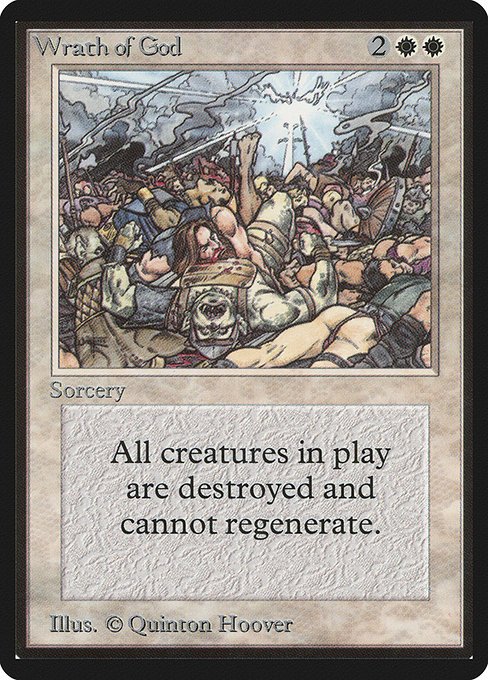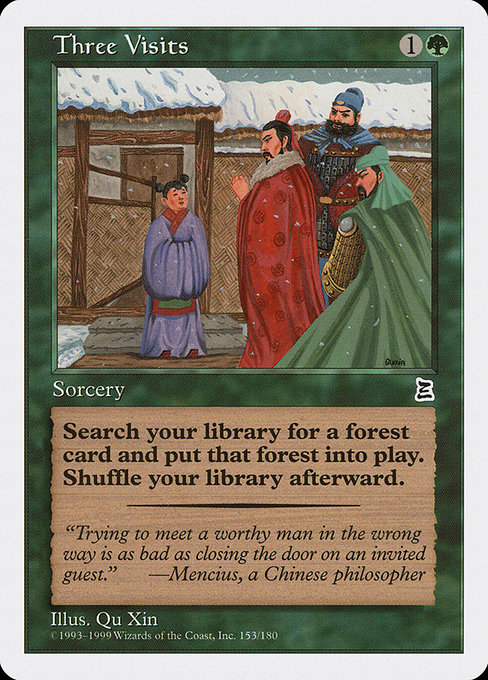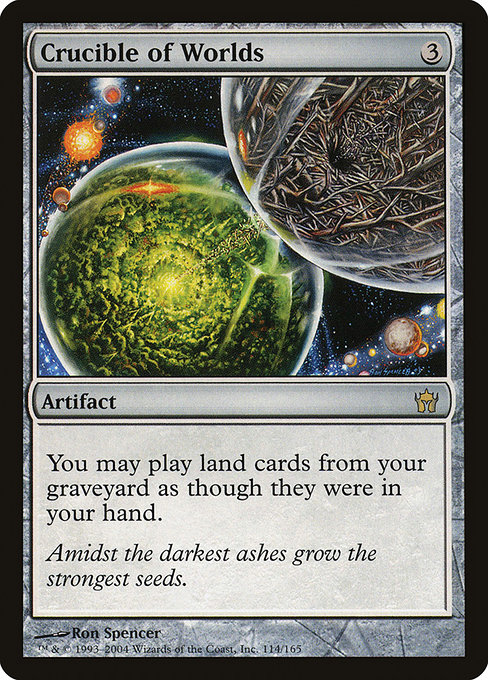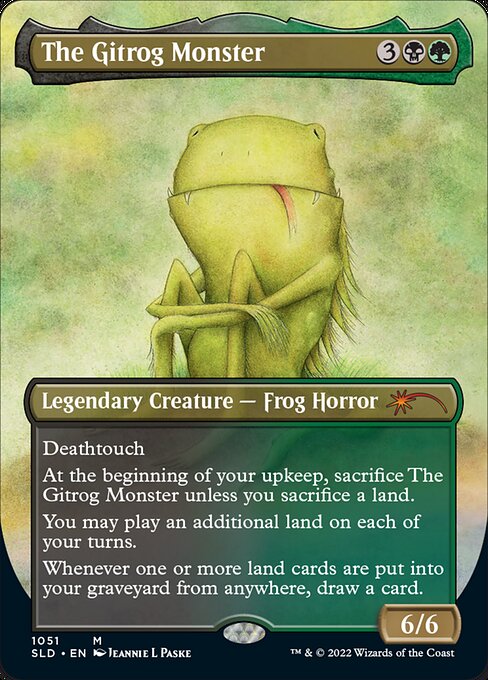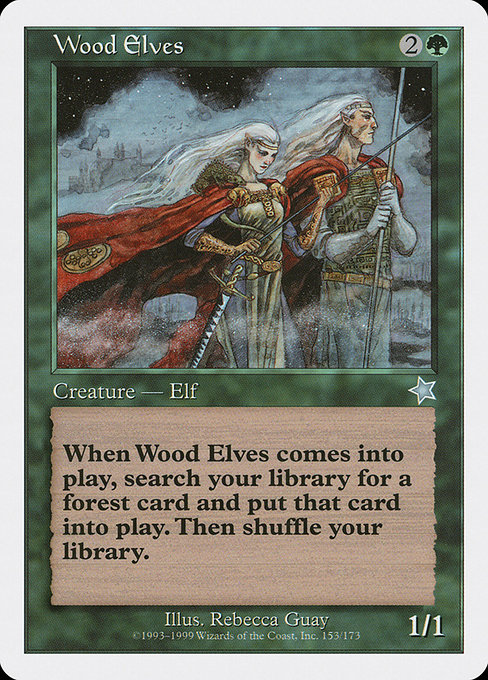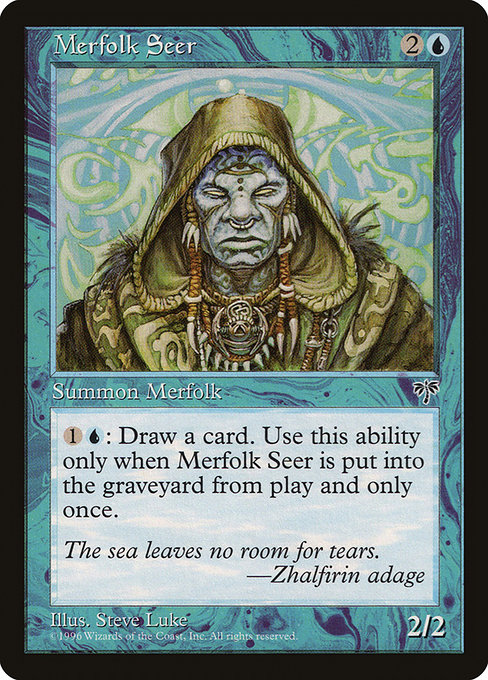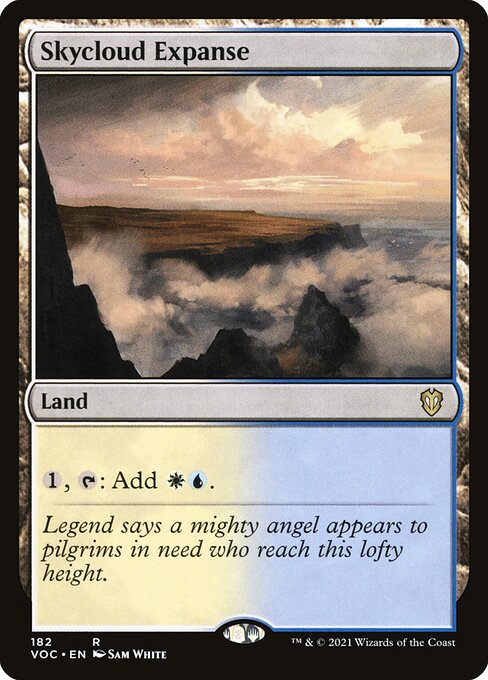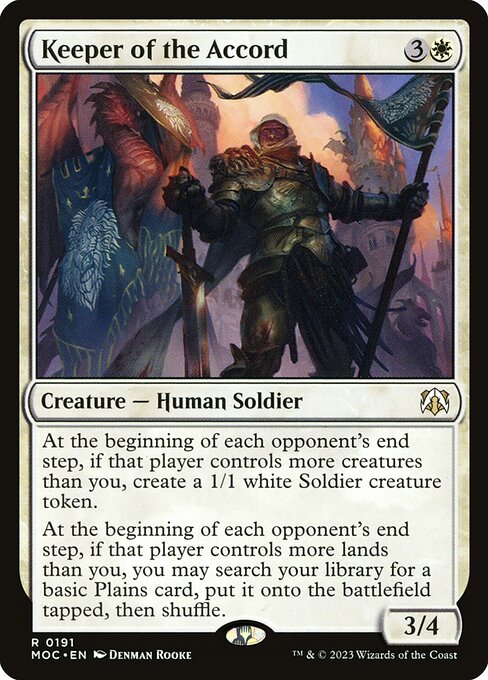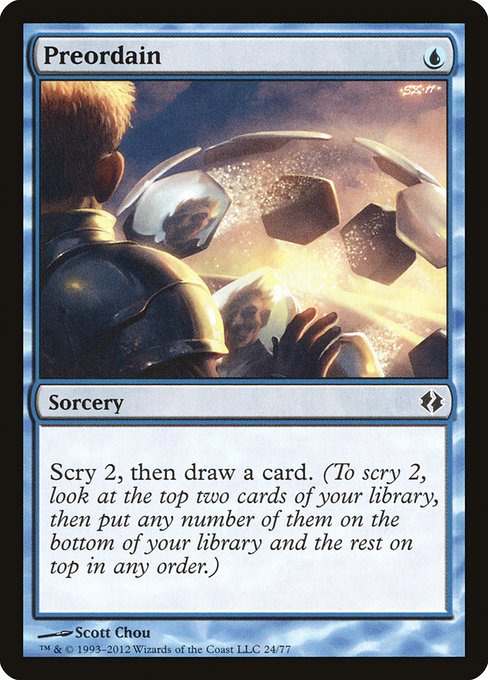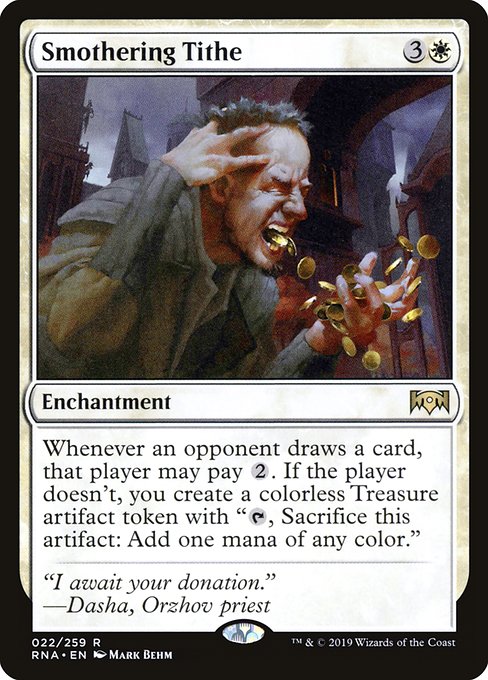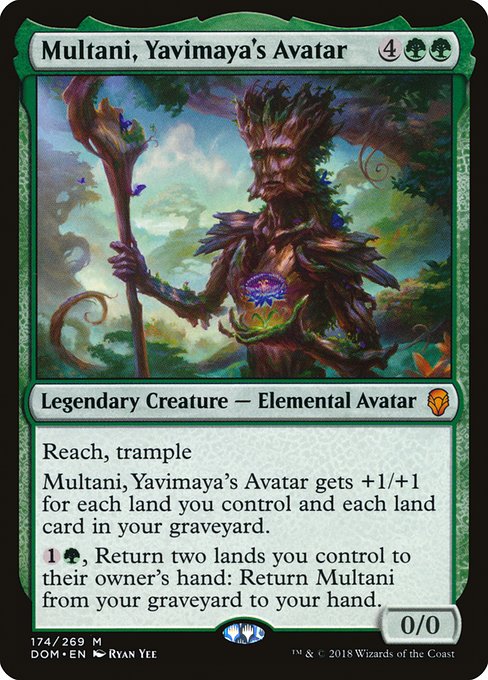
Multani, Yavimaya's Avatar Full Guide

Guide Sections
Cards Mentioned in This Review
These cards are referenced in the strategy guide belowStrategy Guide
Last updated 2025-07-06TL;DR Summary
Multani, Yavimaya's Avatar is a powerful, late-game threat whose power scales incredibly well with the number of lands you control and have cycled through. Its high mana cost and vulnerability early-game are significant weaknesses, but its reanimation ability offers a strong comeback mechanism, making it a potent addition to ramp strategies and graveyard-centric decks.
Card Mechanics & Interactions
Multani, Yavimaya's Avatar is a legendary Elemental Avatar creature with a mana cost of {4}{G}{G}. Its base power and toughness are 0/0, meaning it starts as a relatively weak creature, however this is significantly changed by its first ability. Multani gains +1/+1 for each land you control and each land card in your graveyard. This means that a player with a significant land base and perhaps some land cards in their graveyard can summon a colossal creature. For example, a player controlling seven lands and having three lands in their graveyard would summon a 10/10 Multani. The Reach ability ensures that flying creatures will struggle to avoid combat with it, and Trample guarantees that any excess damage dealt to a blocking creature will carry over to the opponent's life total.
Crucially, Multani's power and toughness are dynamic; they change whenever the number of lands you control or in your graveyard changes. This allows for strategic plays: discarding a land to Collective Unconscious or activating a land's ability that puts it in the graveyard could temporarily increase its power to help it survive combat or deal lethal damage.
The second ability allows you to return Multani from your graveyard to your hand. This {1}{G} activated ability requires returning two lands you control to your hand as a cost. This provides a powerful recursion mechanic, letting you redeploy Multani several times if you have the mana and lands to spare. This interaction makes it a potent card in decks that can generate and sacrifice lands, such as those using The Gitrog Monster or utilizing land-cycling strategies. Note that the ability to return Multani to your hand only works while Multani is in the graveyard. If Multani is exiled, for example, this effect will not work. Similarly, the cost of returning two lands to your hand must be paid – if you do not control two lands, you can not use the ability.
Strategic Applications
Multani, Yavimaya's Avatar's strategic application centers around leveraging a high land count to create an overwhelming, resilient threat. Its power and toughness are directly tied to the number of lands you control and those in your graveyard, making it a powerful finisher in strategies that naturally accumulate lands. Decks aiming for a massive land count, such as ramp strategies, will find Multani exceptionally valuable.
This card excels in several roles. Primarily, it serves as a powerful finisher, capable of dealing massive damage in a single attack thanks to its trample ability. Its Reach ensures that even flying creatures pose little threat, solidifying its defensive capabilities. The secondary role of Multani is as a recurring threat; the ability to return it from the graveyard to your hand provides resilience against board wipes such as Wrath of God or Supreme Verdict. This recurring threat significantly increases the pressure on the opponent, forcing them to dedicate removal to Multani repeatedly.
Archetypes that benefit most from Multani include:
-
High-Land Count Ramp Decks: Decks focused on accelerating land acquisition via cards like Rampant Growth, Cultivate, and Explosive Vegetation will maximize Multani's power and toughness. These decks often aim to overwhelm opponents with large creatures and overwhelming mana advantage.
-
Land-Sacrifice Strategies: While seemingly counterintuitive, strategies that intentionally sacrifice lands, like those using Goblin Bombardment or Cabal Coffers, can still leverage Multani effectively. The graveyard component of his power boost allows these decks to maximize his impact despite sacrificing lands. Life from the Loam becomes particularly valuable in these decks, allowing land recycling and repeated use of Multani's return ability.
-
Reanimator Strategies: Decks that focus on bringing back powerful creatures from the graveyard, like Unearth and Living Death, can also include Multani as a powerful recurring threat. While not strictly reanimation, the self-reanimation ability makes him a good fit here as well.
In decks utilizing these strategies, Multani offers a powerful combination of overwhelming offensive pressure and surprising resilience, making him a strong choice for dedicated green strategies.
Advanced Techniques
Multani, Yavimaya's Avatar's power lies in its ability to scale dramatically based on your land count, making it a potent late-game threat. Its 0/0 base power and toughness are deceptive; with even a modest land base, Multani quickly becomes a formidable attacker. The synergy with graveyard strategies is particularly noteworthy. Cards like Life from the Loam can repeatedly cycle lands into your graveyard, fueling Multani’s growth while simultaneously thinning your deck. Similarly, Crucible of Worlds allows you to repeatedly utilize lands from your graveyard, further bolstering both Multani's power and your mana production.
The return-to-hand ability offers incredible resilience. This isn't just a way to protect Multani from removal; it's a strategic tool. Returning Multani to your hand allows you to recast him, potentially leveraging a larger land count for an even more devastating attack. This can be particularly effective if you've used cards like Rampant Growth or Kodama's Reach to accelerate your mana development, or if you've sacrificed lands to other effects earlier in the game. Careful management of your land count in relation to your graveyard enables tactical decisions on when to play and when to sacrifice Multani, maximizing his impact over multiple turns.
Finally, Multani’s combination of Reach and Trample ensures that his considerable power consistently translates into damage, even against creatures with high toughness. This makes him a very effective finisher and a strong presence even against control decks that may struggle to remove him efficiently. His high power and trample provide additional pressure against opponents prioritizing board control.
Common Mistakes
Common Mistakes with Multani, Yavimaya's Avatar
A frequent mistake is undervaluing Multani's power. His power and toughness are entirely dependent on the number of lands you control and in your graveyard. Players often fail to appreciate how quickly he can become an enormous threat, especially in decks that utilize land ramp Rampant Growth, Cultivate, Kodama's Reach or graveyard strategies Crucible of Worlds, Life from the Loam. Failing to leverage these synergies leaves Multani significantly weaker than his potential.
Another common error is mismanaging the return-to-hand ability. While powerful, it requires careful consideration of resource expenditure. Returning two lands to your hand can disrupt mana development, especially in the mid-to-late game. Players should weigh the immediate benefit of bringing Multani back against the potential cost of losing access to those lands, particularly if they are producing crucial mana for other spells or Overrun effects. The activation cost shouldn't be underestimated either; if your mana is already stretched thin, activating the ability might leave you vulnerable.
Finally, some players overlook the strategic implications of Multani's high mana cost. A {4}{G}{G} cost demands significant mana investment, potentially slowing down other plays. Players need to ensure they have a reliable mana base and ramp strategies in place to cast Multani effectively without hindering their overall game plan. Casting Multani too early, before having sufficient lands to make him impactful, is a common misstep.
Conclusion
Multani, Yavimaya's Avatar is a powerful, late-game threat whose power level is directly tied to the number of lands you control and have cycled through. His high mana cost demands a significant land base already in play before he can be effectively summoned. His 0/0 base power and toughness makes him vulnerable early, but his scaling power quickly makes him a formidable attacker, especially when paired with ramp strategies like Rampant Growth or Cultivate. The ability to return him from the graveyard to your hand offers a second chance, allowing you to leverage your already established land advantage. Consider playing Multani when you have a significant land presence and a graveyard containing lands, especially when facing opponents vulnerable to large trampling creatures. His strength comes from a well-established game state, making him less effective in aggressive, fast-paced decks.
Deckbuilding & Synergies
Multani, Yavimaya's Avatar's power hinges on the number of lands you control and in your graveyard. Building a deck around him necessitates a strategy that maximizes both. You'll want a high land count, which inherently slows down your early game. This necessitates including ramp cards to accelerate your mana development. Rampant Growth, Cultivate, and Kodama's Reach are excellent choices to get ahead on mana. Three Visits is particularly strong, providing both lands to play and lands to add to the graveyard for Multani's power.
Synergistically, cards that allow for land manipulation and graveyard recursion are highly beneficial. Crucible of Worlds allows you to repeatedly utilize lands from your graveyard, increasing Multani's power and providing additional mana. Ramunap Excavator similarly lets you cycle through lands, providing mana and adding to the graveyard. Eternal Witness offers a way to retrieve crucial lands or other impactful cards from your graveyard.
The recurring ability to return Multani from your graveyard allows for multiple powerful attacks. This makes resilient card draw important. Harmonize, Rishkar, Peema Renegade, and Beast Whisperer can refill your hand and provide additional creatures, allowing you to protect Multani and maintain board presence. Cards that give you extra land drops, such as Explore and Farhaven Elf, can be instrumental in getting Multani online quickly and giving him impressive power.
To further enhance your strategy, consider including cards that benefit from a high land count or offer additional graveyard synergy. Overgrowth or similar land-based enchantments will make Multani even larger. The deck needs to be constructed carefully, balancing the need for early game ramp with the payoff of a massive Multani later in the game. A successful Multani deck needs to carefully manage its land count to minimize early game vulnerability.
Format Roles
Multani, Yavimaya's Avatar's viability hinges heavily on the number of lands a player can consistently control and leverage in their graveyard. This makes it a highly format-dependent card. In Standard, its high mana cost and reliance on a large land count pose significant challenges. While powerful ramp strategies exist, consistently generating enough lands to make Multani a significant threat before the opponent establishes a strong board presence is difficult. Rampant Growth and similar cards can help, but the inherent tempo loss might prove too significant.
Historic presents a more promising environment. The increased card pool allows for more robust land-based strategies, including those focused on graveyard manipulation like The Gitrog Monster. Reanimating Multani with Collected Company or similar effects becomes a more realistic possibility, boosting its power significantly. However, even in Historic, the 7 mana cost still requires considerable setup.
Commander is where Multani truly shines. The higher land counts typical of Commander decks, along with the increased availability of mana ramp and graveyard recursion strategies, make Multani a potent threat. In a dedicated land-matters Commander deck, he can easily become a game-ending force, especially when combined with cards like Skyshroud Ranger and Life from the Loam to maintain a large number of lands in play and the graveyard. His ability to return to hand offers further resilience, allowing for repeated powerful board swings.
Key Scenarios
Multani, Yavimaya's Avatar's power lies in its ability to become an enormous threat given sufficient land control. One impactful scenario involves a mid-to-late-game situation where you've established a strong land base and perhaps even sacrificed some lands to ramp earlier in the game. Let's say you control seven lands and have three land cards in your graveyard. Multani would enter the battlefield as a 10/10 creature with reach and trample, capable of easily overwhelming your opponent's defenses, especially if they lack flying creatures or sufficient blockers. This could be further enhanced by creatures like Overrun or Craterhoof Behemoth that scale with the number of creatures you control.
Another scenario highlights Multani's resilience. Imagine a board state where you've played Multani to great effect, but your opponent has managed to remove it with a targeted removal spell like Path to Exile. You still control five lands. Using the {1}{G} ability, you can return two lands to your hand, then bring Multani back to your hand, poised to replay him later in the game as a substantial threat once you've recouped your mana. This allows for a powerful comeback strategy, especially if your opponent has expended resources on dealing with him the first time.
A final scenario illustrates synergistic strategies: Imagine a deck built around land ramp and sacrifice strategies such as The Great Henge. You have played The Great Henge and sacrified lands to accelerate mana development. You can later play Multani, who will benefit from both your remaining lands and those sacrificed lands in your graveyard, creating an enormous creature. After using Multani to deal lethal combat damage, your opponent would be unable to stop the inevitable.
History & Meta
Multani, Yavimaya's Avatar, first appearing in Dominaria (DOM), immediately made a splash as a powerful, yet conditional, green creature. Its 0/0 base power and toughness meant it was completely vulnerable until several lands were controlled, but the potential for exponential growth was immense. This high risk-high reward design resonated with players who enjoyed building decks centered around land-based strategies. Early appearances showcased Multani alongside other powerful green creatures such as Skyshroud Ranger and Wood Elves, further enhancing the land-ramp strategies that made Multani a viable threat. The ability to get +1/+1 for each land in the graveyard, as well as in play, encouraged players to utilize graveyard strategies, often pairing him with cards that could manipulate lands in the graveyard, such as Life from the Loam.
While never dominating the metagame at the highest levels of competitive play in the same way that some other powerful mythic rares have, Multani consistently saw play in various formats, particularly Commander. Its high power ceiling and impressive synergy with land-centric strategies made it a favorite for green-based strategies there. The "return to hand" ability also added a significant layer of resilience, allowing for a second chance after removal. This made Multani a powerful engine for repeatable value within a game, even if he was initially destroyed by opposing strategies, or even his own to provide a powerful play later on.
Reprints of Multani have been relatively infrequent, highlighting his status as a powerful and sought-after card. This scarcity contributed to his consistent value in the secondary market. Though never printed at common or uncommon, the lack of more frequent reprints underlines his design as a powerful mythic rare suitable for powerful decks in a variety of formats. The absence of a significant reprint history has likely contributed to the card's lasting appeal and maintains a high demand among players, particularly among those focusing on green strategies in constructed and casual formats. The continued interest in Multani, Yavimaya's Avatar testifies to its successful design, balancing high potential with demanding conditions, creating a legendary creature that has stood the test of time and remains a popular choice.
Flavor & Lore
Multani, Yavimaya's Avatar embodies the untamed power of Yavimaya and the raw, elemental forces of Dominaria. The 0/0 base power and toughness, coupled with the scaling based on land count, perfectly captures the idea of a burgeoning, ever-growing force of nature. The art itself likely depicts a colossal, vibrant elemental creature, reflecting the sheer magnitude of its potential. This aligns well with the established imagery associated with Yavimaya and its connection to powerful, nature-based entities, recalling the grandeur of other powerful green creatures like Ulamog, the Ceaseless Hunger (though Multani is far more tied to the land itself).
The flavor text would ideally highlight Multani's symbiotic relationship with the land, emphasizing its growth and strength as the land prospers, both in play and in the graveyard. The graveyard recursion ability further strengthens this connection, suggesting that even after being defeated, Multani can return, fueled by the land's enduring essence. This mechanic is reminiscent of other graveyard strategies, but unlike The Gitrog Monster, which focuses on swamps and self-milling, Multani’s ability explicitly pushes the player to utilize their lands strategically, which fits thematically with Dominaria's focus on land-based strategies.
The design of Multani cleverly blends powerful aspects of green’s strengths with high risk and reward. The massive potential size paired with the easily disrupted 0/0 starting stats creates intriguing gameplay decisions. Players must carefully balance deploying Multani at the right moment, leveraging their land count and managing the potential of returning him to their hand for later. This adds a strategic layer that fits the more complex gameplay often associated with Mythic Rare cards within the set.
Budget/Alternatives
Multani, Yavimaya's Avatar's mana cost of {4}{G}{G} and mythic rarity immediately suggest it's not a budget-friendly card. Mythic rares are inherently more expensive than other rarities due to their lower print runs. The power level reflected in its abilities further contributes to its higher price point. Its stats scale dramatically with the number of lands you control, making it a potent force in the late game. However, this strength comes at the cost of accessibility.
Cheaper alternatives exist depending on the specific role Multani fills in your deck. If you need a large, powerful green creature, consider Terastodon or Ulamog, the Ceaseless Hunger , although they operate differently. For a more budget-friendly ramp strategy that utilizes your lands, Overrun or Crushing Vines might be better choices. If the graveyard recursion is the key element, cards like Eternal Witness offer a more affordable route to recovering lands, although they don't provide the same overwhelming power in combat as Multani. Ultimately, the best substitute depends heavily on your deck's overall strategy and budget constraints.
